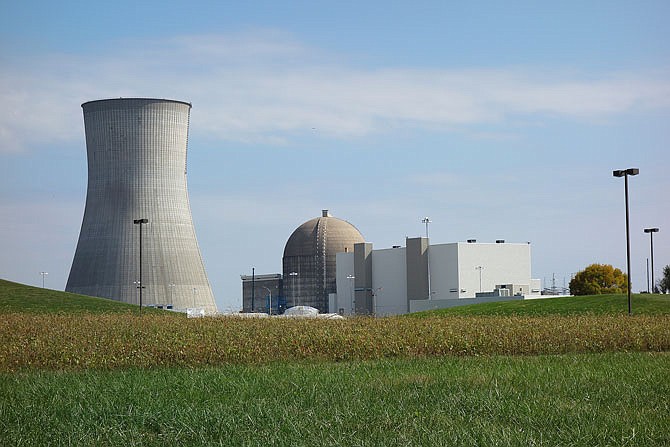The Callaway Energy Center will receive the baseline level of oversight this year following a year of safe and efficient operation, according to the Nuclear Regulatory Commission.
The NRC hosted a virtual meeting Tuesday to discuss the performance of 12 nuclear power plants within Region 4. The commission regulates and monitors commercial nuclear reactors across the United States.
"In the past, we have conducted annual local meetings near each plant, but we're conducting them virtually this year because of the health crisis," explained Frances Ramirez, member of NRC facilitator corps.
The NRC places resident inspectors at each nuclear facility to monitor day-to-day operations, conduct inspections and complete assessment activities, said Chris Newport, senior inspector at Diablo Canyon in San Luis Obispo, California.
"At least two are assigned to each reactor site, and they live in the local communities," he said.
Inspectors meet frequently with senior plant management and also mingle with facility workers to assess the plant's "safety culture."
Each facility is also regularly visited by specialized inspectors who travel around the region checking facility performance in specific areas such as security, emergency planning and engineering.
The inspectors record inspection findings and performance indications. An inspection finding could be something like noting the plant's failure to promptly identify and correct an issue with a valve. Performance indicators include things like the plant's effectiveness at keeping coolant system leakage low and minimizing employee exposure to radiation.
"These two datasets feed into our assessment process in which the NRC determines level of scrutiny applied to each site," Newport said.
The NRC Reactor Oversight Process uses color-coded inspection findings and indicators to measure plant performance. The colors start at green and increase to white, yellow or red, commensurate with the safety significance of the issues involved. Inspection findings or performance indicators with more than very low safety significance trigger increased NRC oversight.
Depending on plant performance and inspection findings in a given year, plants will be subject to one of five levels of scrutiny by the NRC in the following year.
At the conclusion of the year, all inspection findings and performance indicators for the 12 Region 4 plants were green, or of very low safety significance. Additionally, all performance indicators were within the expected range. As a result, the plants in 2020 will receive the normal, baseline level of oversight.
"That still entails 3,500 inspection hours at each reactor site both regional inspectors and on-site inspectors," Newport said.
Some of those inspections might look a little different this year. The ongoing COVID-19 pandemic has forced the NRC to adapt to social distancing requirements.
Resident inspectors are still making regular visits to sites, but they are conducting some meetings and monitoring virtually.
Certain specialized inspections are being deferred for the time being, but the NRC hopes to complete all baseline monitoring requirements by the year's end.
In addition to the Callaway plant, Region 4 includes Arkansas Nuclear One in Russellville, Arkansas; Comanche Peak in Glen Rose, Texas; Cooper Nuclear Station in Brownville, Nebraska; Columbia Generating Station near Richland, Washington; Diablo Canyon; Grand Gulf in Port Gibson, Mississippi; Palo Verde in Wintersburg, Arizona; River Bend in St. Francisville, Louisiana; South Texas Project in Bay City, Texas; Waterford in Killona, Louisiana; and Wolf Creek near Burlington, Kansas.
Callaway Energy Center is part of Branch B, which also includes Comanche Peak and Wolf Creek.
To read the Callaway plant's annual assessment letter, visit bit.ly/3dTTvsq.

